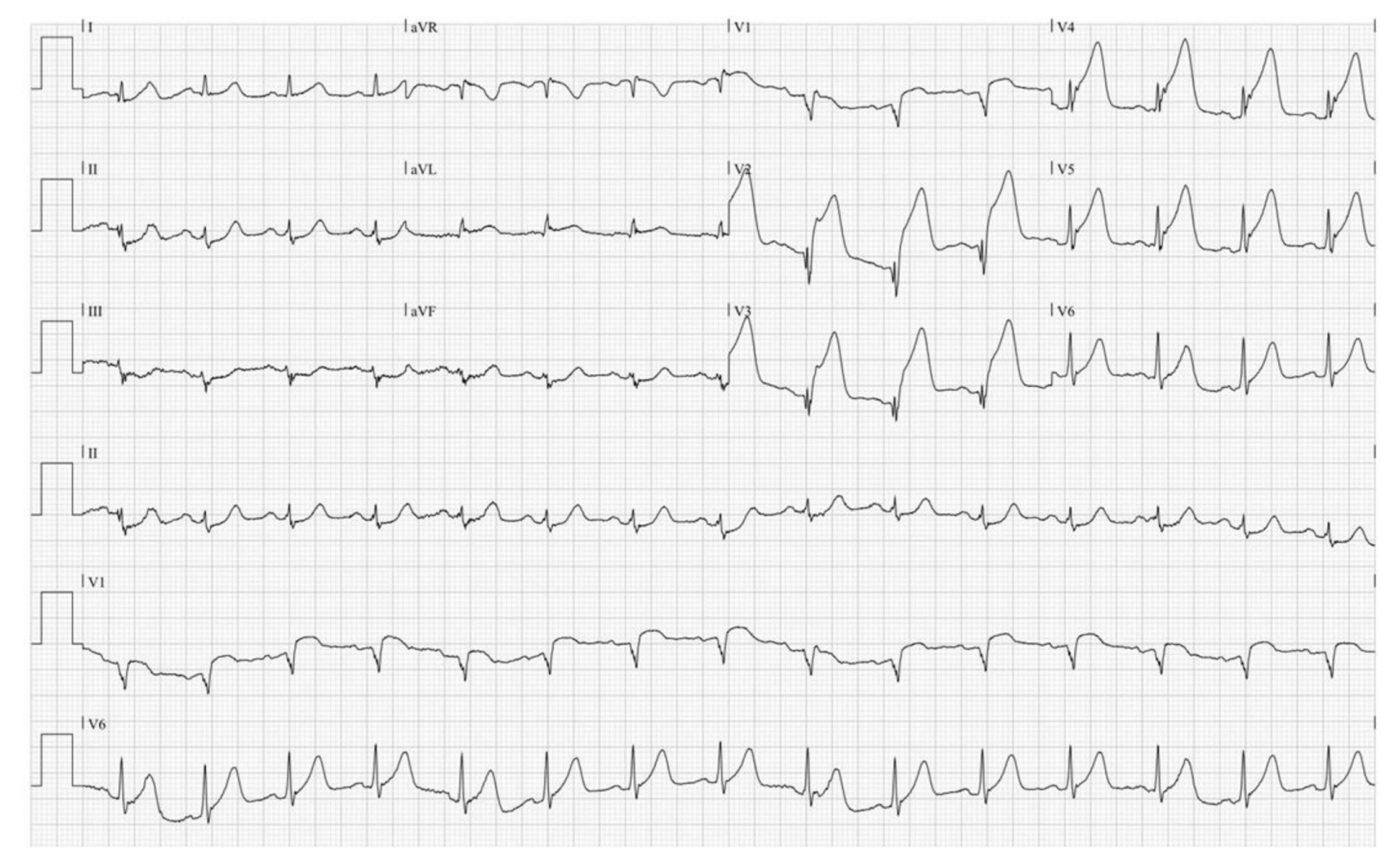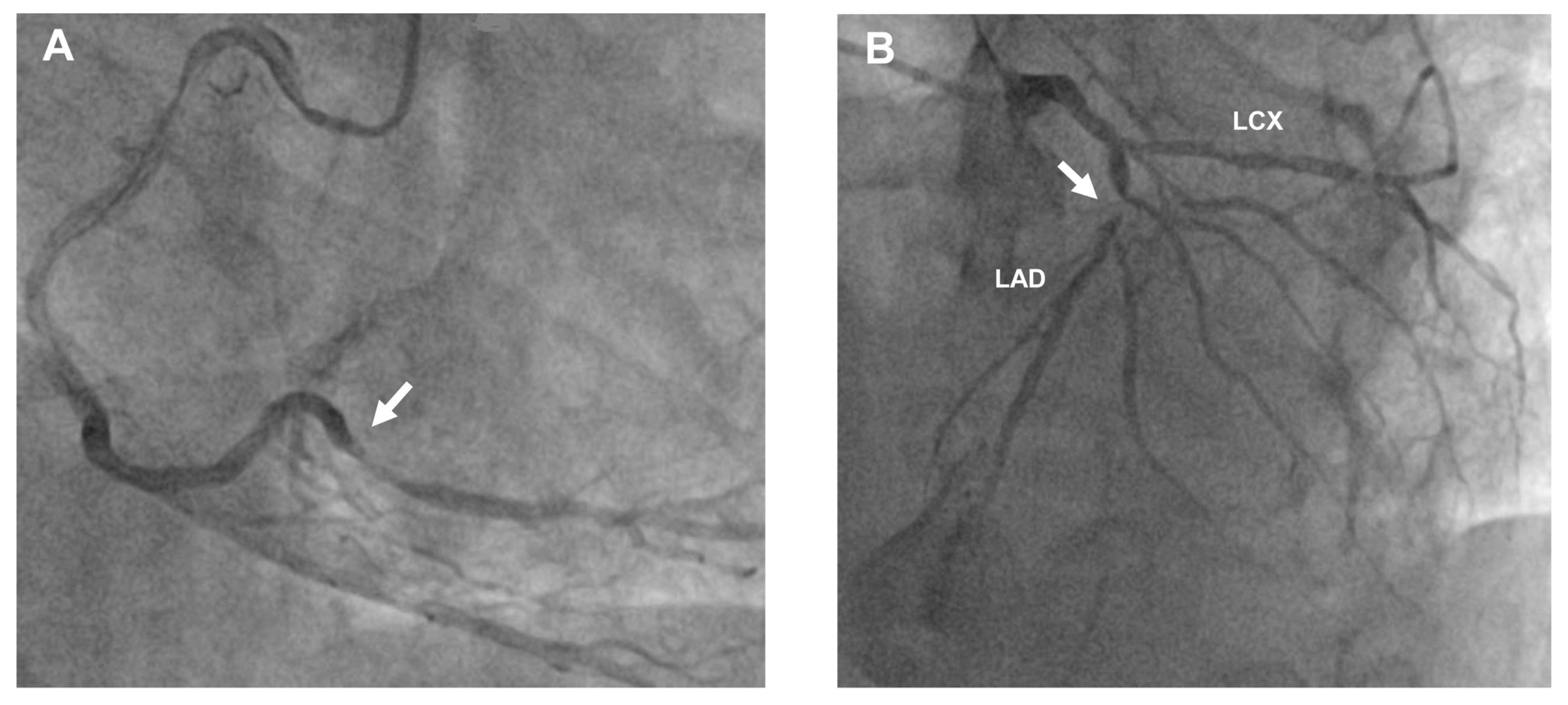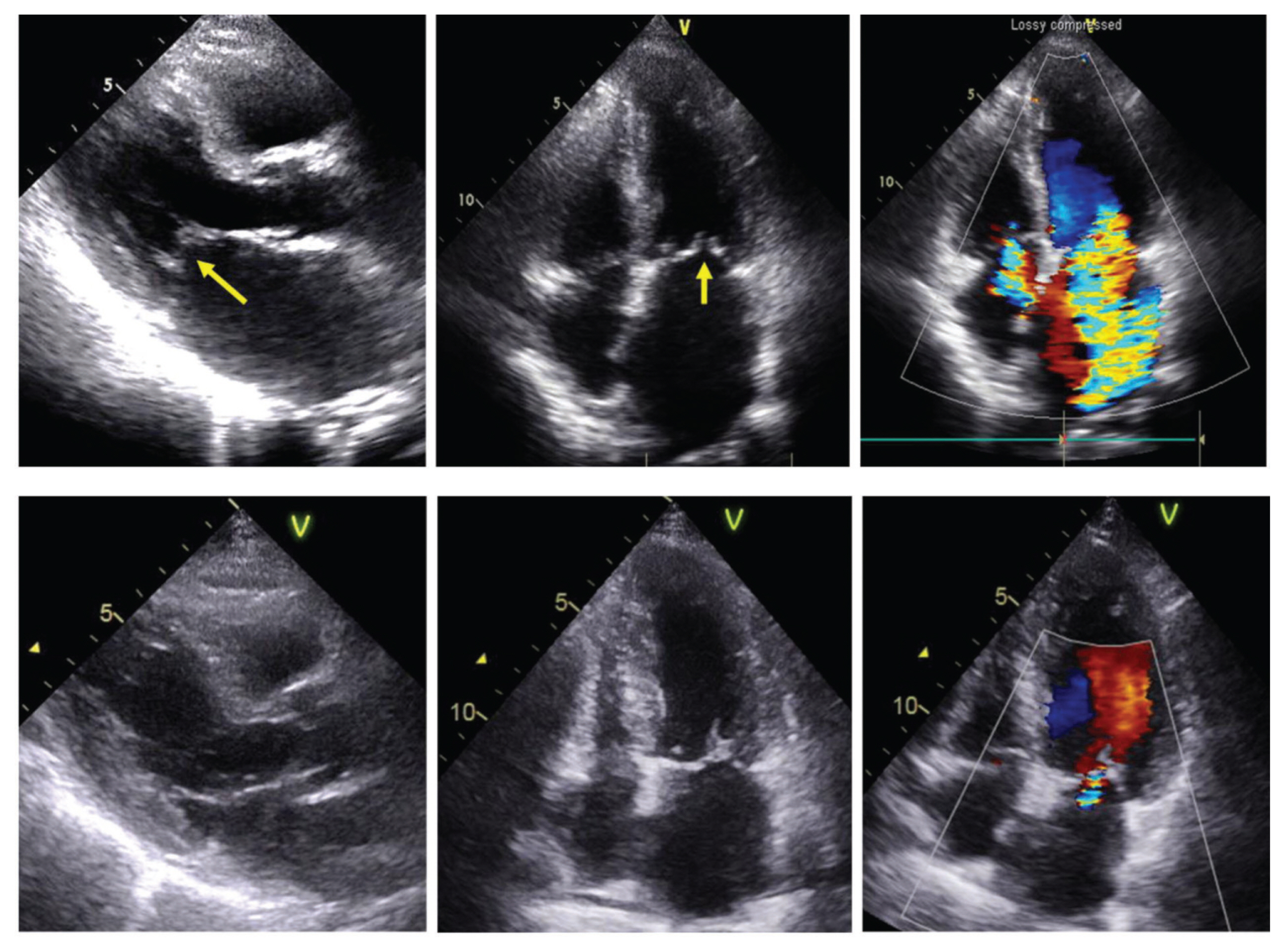Kosin Med J.
2020 Jun;35(1):47-51. 10.7180/kmj.2020.35.1.47.
Dynamic Change of Ischemic Mitral Regurgitation in a Patient with Acute Coronary Syndrome
- Affiliations
-
- 1Division of Cardiology, Department of Internal Medicine, Gyeongsang National University School of Medicine and Gyeongsang National University Hospital, Jinju, Korea
- KMID: 2503728
- DOI: http://doi.org/10.7180/kmj.2020.35.1.47
Abstract
- Ischemic mitral regurgitation (IMR) is commonly known as a chronic complication of left ventricular remodeling due to coronary artery disease. Acute IMR after coronary artery disease, such as acute myocardial infarction particular, could also develop as a mechanical complication involving papillary muscle rupture. However, the clinical significance of acute transient IMR and the therapeutic intervention in coronary artery disease is infrequently reported. We describe a patient with acute pulmonary edema due to acute IMR, which resolved immediately after coronary revascularization.
Figure
Reference
-
1. Liang JJ, Syed FF, Killu AM, Boilson BA, Nishimura RA, Pislaru SV. Mechanistic insights into transient severe mitral regurgitation. Acute card care. 2015; 17:41–4.
Article2. Nishino S, Watanabe N, Kimura T, Enriquez-Sarano M, Nakama T, Furugen M, et al. The course of ischemic mitral regurgitation in acute myocardial infarction after primary percutaneous coronary intervention: From emergency room to long-term follow-up. Circ Cardiovasc Imaging. 2016; 9:e004841.
Article3. Yousefzai R, Bajaj N, Krishnaswamy A, Goel SS, Agarwal S, Aksoy O, et al. Outcomes of patients with ischemic mitral regurgitation undergoing percutaneous coronary intervention. Am J Cardiol. 2014; 114:1011–7.
Article4. Finelli DS, Mehta J. Transient severe mitral regurgitation due to myocardial ischemia. Chest. 1982; 82:376–8.
Article5. Cahyadi YH, Murakami E, Takekoshi N, Matsui S, Kanemitsu S, Nakatoh H. Disappearance of mitral valve regurgitation after successful percutaneous transluminal coronary angioplasty. Jpn Circ J. 1991; 55:767–71.
Article6. Marmoush FY, Al-Qadi MO, Barham WY, Abdin AM, Daraghmeh AH, Yammine JF. ‘Angina’ of the papillary muscle: An overlooked but reversible etiology of mitral regurgitation. R I Med J (2013). 2015; 98:28–9.7. Avierinos JF, Thuny F, Tafanelli L, Renard S, Chalvignac V, Guedj E, et al. Eclipsed mitral regurgitation: A new form of functional mitral regurgitation for an unusual cause of heart failure with normal ejection fraction. Cardiology. 2008; 110:29–34.
Article8. Milleron O, Bouleti C, Mazouz S, Brochet E, Rouzet F, Nataf P, et al. Eclipsed mitral regurgitation: An unusual cause of acute heart failure. Eur Heart J Cardiovasc Imaging. 2017; 18:1163–9.
Article
- Full Text Links
- Actions
-
Cited
- CITED
-
- Close
- Share
- Similar articles
-
- Preoperative Risk Factors for the Prognosis of Mitral Regurgitation in Patients with Coronary Artery Stenosis and Mitral Regurgitation Who Underwent Coronary Artery Bypass Surgery Alone
- Long-term Influence of Mild to Moderate Ischemic Mitral Regurgitation after Off-pump Coronary Artery Bypass Surgery
- Preoperative Extracorporeal Membrane Oxygenation for Severe Ischemic Mitral Regurgitation: 2 case reports
- Repair of Acute Post Infarction Mitral Regurgitation with Papillary Muscle Reimplantation: A case report
- Assessment of Mitral Stenosis by Doppler Echocardiography: Influence of Regurgitation on Doppler Pressure Half-Time




